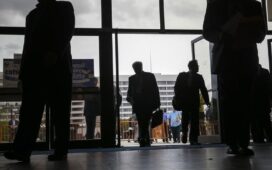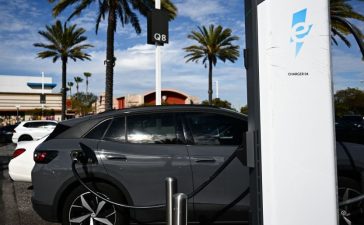Unlock the Editor’s Digest for free
Roula Khalaf, Editor of the FT, selects her favourite stories in this weekly newsletter.
Super Tuesday, the day on which the largest number of US states hold presidential primaries, is almost upon us. The results are baked in — Donald Trump and Joe Biden will be the winners. But the primaries may give us insight into the divide between what data shows, particularly the economic variety, and the felt experience of the voting public.
One of the biggest mysteries of this campaign season has been why Joe Biden has not been given more credit for America’s booming economy. Gross domestic product is up, inflation is down and the jobs market could hardly be better. And yet, consumer sentiment remains low and that will probably be reflected in Tuesday’s exit polls, which survey not only which candidates voters chose, but why.
I suspect those polls will tell us that economic data and voters’ felt experience are in collision with each other, or, at the very least, not correlated in the ways that we might imagine.
Take inflation. Yes, it’s been cooling, even as unemployment remains low and wages edge up. And yet, people don’t feel consumer price index numbers. They feel the cumulative hit from how prices of groceries, rent, gas, electricity, car insurance and other necessities have risen by more than 20 per cent in the past two or three years.
For most Americans, particularly younger and more vulnerable ones, the felt experience of inflation isn’t, “Hey, things are expensive but prices rises are coming down and I have more money in my pocket.” It’s anger. As Democratic pollster Stan Greenberg puts it, “My key learning [during this campaign season] has been that even when you come out of an inflationary period, people stay angry for a long time.”
That lingering pessimism is compounded by the fact that generational economic shifts (such as inflation moving above 5 per cent, which hadn’t happened since 2008) tend to imprint on people for the rest of their lives. Indeed, there is research to show that even one really tough year experienced in early adulthood is enough to change behaviour for a lifetime.
I think of my British grandmother, a nurse in the second world war, who would use a tea bag multiple times. Or conversely, my boomer parents, who feel comfortable carrying a mortgage well into their retirement. Feelings drive our economic decisions, and our voting.
I suspect that this truth will be reflected not only in perceptions of prices, but also around migration and border security, which loom large as an election issue. Immigrants have, of course, always been core to America’s economic success (their impact is a net positive at both the high and low ends of the socio-economic spectrum). There’s even new evidence that suggests foreign-born workers are a key reason why labour inflation hasn’t been higher.
That includes legal as well as illegal immigrants. A recent Strategas Research Partners report on how “big immigration” is key to understanding US growth notes that: “To the extent US immigration has been tough to fully measure in recent years, the reported data [showing the disinflationary impact of migration] may be underestimating this boost.”
It continues: “The policy enacted by some states to relocate migrants from the southern border to larger cities may have also had the (likely unintended) effect of matching individuals to regions where there was an ability to work, even if informally.”
I certainly see that when I look around New York. Yes, we have major issues housing migrants, but we also have a huge pool of informal labourers keeping service costs down in areas such as restaurants and the care economy. I’d love to see fast-tracking of formal work permits for migrants who can fill gaps in tight labour markets. But I’m in the minority; 61 per cent of Americans — and 91 per cent of Republicans — consider illegal immigration a “very serious” problem.
That divide reflects perhaps the most important way in which feelings rather than facts dictate political reality today — the growing partisan divide in economic perceptions. A study published in 2022 by Stanford and New York University scholars found that the gap in how Democrats and Republicans viewed the same economic data doubled between 1999 and 2020. Both parties have moved equally away from the baseline views of independent voters. We’re all partisans now.
What’s more, the divide tends to increase during times of economic recovery, like the Obama years following the great financial crisis, or the Biden boom of today. The study’s authors posit that this may be “because ideologues of all stripes can find economic data or views that flatter their political beliefs”.
That certainly rings true to me. Consider that economically distressed counties representing 8 per cent of US GDP have received 16 per cent of strategic sector investments in things such as clean energy and semiconductors since 2021, thanks to the Biden administration’s focus on place-based economics. Yet because these are long-term plays that take years to funnel through into a felt experience in these communities, many of the people who live in those places may still vote Trump.
The facts of Super Tuesday are a known quantity. Instead watch the feelings, and what they might tell us about November.











